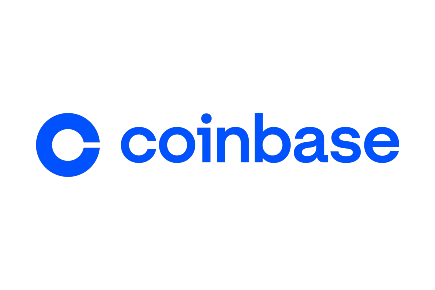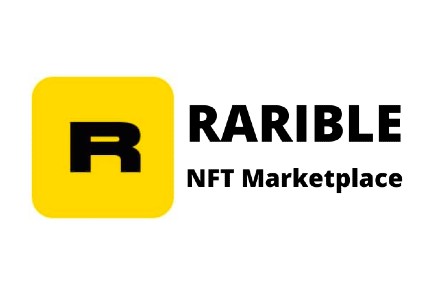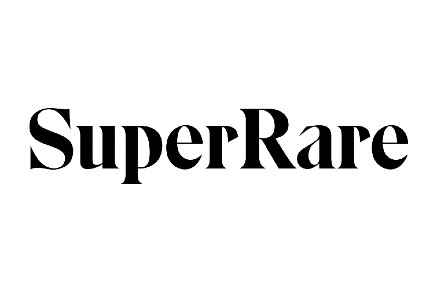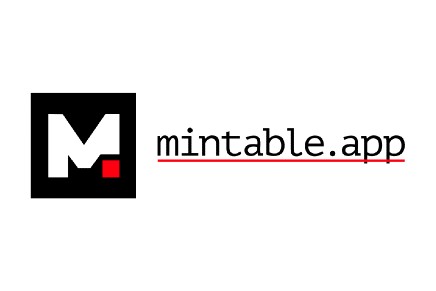The NFT craze is transforming industries across the globe from music to space exploration. An NFT marketplace is your opportunity to get in on the action, a safe place to buy and sell digital assets.
With dozens of NFT marketplaces available I’ve taken the time to review them all to bring you this definitive list of the best NFT marketplace for you.
Also consider: Best Crypto Exchanges UK
Top NFT marketplaces at a glance

OpenSea
Best Overall and Huge Asset Selection
The largest NFT marketplace available in the NFT space in terms of trading volume, OpenSea is regarded by many to be leading the way in NFT sales. The range of assets is huge and OpenSea also has an excellent offering for anyone looking to create their own NFTs using their item minting tool.
OpenSea is the best NFT Marketplace for beginners, and also the biggest NFT marketplace by some margin. It was built on the Ethereum blockchain and currently supports over 150 cryptocurrencies for purchasing your NFTs.
Categories
- Art
- Digital collectables
- Domain names
- Music
- Photography
- Sports
- Trading Cards
- Utility
- Virtual Worlds
Fees
- Free to use
- 2.5% fee for each sale
Pros:
- Very easy to use
- Wide selection of NFTs
- Excellent minting tools
Cons
- High gas and carbon fees with Ethereum
Blockchain
- Ethereum
- Polygon
- Klatyn

Coinbase
NFT from a reputable Crypto Company
A relative newcomer in the NFT market, Coinbase allows it’s customers to link their Coinbase wallet to NFTs
Coinbase currently only allow trading in NFTs using Ethereum which may be the biggest NFT blockchain around, but its gas fees can be significantly higher than on other networks. Prices can also be viewed in USD on Coinbase but transactions and NFTs are stored on Ethereum. This does mean that you and not Coinbase are responsible for the security of your assets as they are not stored on their platform but in your crypto wallet.
Categories
- Trending
- Photography
- Sports
- Collectibles
- Music
- Art
- Fashion
- Trading Cards
Fees
- Sale commission worked out at time of sale
- ETH Gas fees increase at busy times
Pros:
- Now allows NFT minting
- Easy to use interface
- Wide selection of NFTs
Cons
- Variable gas fees with Ethereum
- Sales fees not available until sale made
- Only uses Etherium blockchain
Blockchain
- Ethereum

Rarible
Best for Categories and NFT Art Marketplace
In terms of the sheer volume of NFTs, Rarible comes a close second to OpenSea however, where they differ is that Rarible requires you to use the token Rarible (CRYPTO:RARI) in order to buy and sell NFTs using this NFT marketplace. Rarible has a strong focus on art assets with the option for creators to use the platform to ‘mint’ their own NFTs.
Rarible is a more expensive option for buyers at 2.5% although this may be considered worthwhile to access the multichain support and hosting of NFTs built on Ethereum, Flow and Tezos.
In terms of purchasing power, Rarible accepts credit and debit cards and the Marketplace is open to more than 190 countries making it a truly international NFT marketplace.
Categories
- PFP
- Art
- Metaverse
- Photography
- Music
- Sports
- Domains
- NSFW
- Earning
- Games
Fees
- 2.5% to buy and sell NFTs
- 0.010 ETH gas fees when buying NFTs
Pros:
- Supports debit and credit card purchases
- Supports more than one chain
- Supports multiple crypto wallets
- Open to over 190 countries
Cons
- 2.5% fee for buyers and seller
- Requires an ETH crypto wallet for both deposits and withdrawals
Blockchain
- Ethereum
- Flow
- Tezos

SuperRare
Best for Discovering Artists
SuperRare is about focusing on exclusive digital artwork. Here, NFT enthusiasts can buy, sell, and mint their own unique, single edition digital artworks created by an artist in the SuperRare network.
SuperRare describe themselves as being akin to Instagram meets Christie’s, combining culture, art, and collecting on one social network.
SuperRare is based on the Ethereum blockchain and only deal with a select number of artists, although new artists are encouraged to submit their artist profile.
Categories
- Still image
- GIF
- 3D artwork
- Video
Fees
- 3% to buy
- 15% to sell
Pros
- Artists are paid 10% on all secondary sales
- First collectors are paid 1% of each subsequent sale
- High quality, unique works of digital art
Cons
- 15% seller fee is high for an NFT marketplace
- ETH only
Blockchain
- Ethereum

Mintable
Best for Minting your own NFTs
All types of creators can use the Mintable platform to mint and sell their work as a digital asset. Mintable aim to provide a broad spectrum of content with very little knowledge and expertise required to create an NFT from almost any digital file.
Using Immutable X helps avoid gas fees and Mintable provide free education which can be accessed via Mintable University with the express aim to help users improve their NTF knowledge.
In addition, Mintable offer an easy to use platform for the purchase of NFTs with several categories to choose from.
Categories
- Art
- Music
- Videos
- Collectibles
- Sports
- Utility
Fees
- Buyer fee – 2.5% on normal items
- 5% on gasless items
- 10% on printable series
Pros
- Gasless minting (mint NFTs for free)
- Advanced trading volume and selling features to help maximise the value of NFTs
- Social features
Cons
- Limited selection of crypto wallets
- High marketplace fees
Blockchain
- Ethereum
- Immutable X
What is an NFT?
NFT stands for non-fungible token. Still confused? I don’t blame you.
Non-fungible means unique, or non-replaceable. This can include a tangible asset (ie an original piece of art) or a non-tangible asset such as an NFT which is usually a digital piece of art, collectable, video, or piece of music…you get where I’m going with this.
Most NFTs are part of the Ethereum blockchain. Ethereum is a cryptocurrency, much like Bitcoin, however, it supports the buying and selling of NFTs by storing additional information.
Whilst NFTs can include anything digital, most of the excitement surrounding them at present is in relation to fine art collections.
NFTs are bought and sold online, on an NFT marketplace, often using cryptocurrency. Whilst many of these creations can be taken as a screenshot or downloaded, only the buyer can own the original item, which comes with built-in authentication serving as proof of ownership.
What are the best NFT communities?
NFT communities are groups of NFT collectors and investors working together to build a culture and promote the success of NFTs. Here you will find other enthusiasts at the forefront of this concept, looking to share the social dynamics that help create demand. They tend to do this through the power of social media, creating hype around digital assets.
Some of the notable NFT communities include:
- CryptoPunks
- Cool Cats
- Deadfellaz
- CryptoMories
- Nuclear Nerds
What is the most popular NFT app?
An NFT app provides a place for creators, sellers, and buyers to come together and trade in NFTs. By number of traders, the top five NFT apps are:
- OpenSea
- Axie Infinity
- NBA Top Shot
- Atomic Market
- Hic et nunc
Of these top five NFT Marketplaces, NBA Top Shot boasts the greatest volume.
How to choose the best NFT Marketplace
There are a wide range of NFT Marketplaces available, each with its own advantages. In order to identify which of these top NFT Marketplaces are best for you, it is first prudent to identify whether you are interested in minting, buying, or selling NFTs.
In addition to this, the kind of digital asset that spikes your interest, whether it be videos, video games, art, collector’s items, sports memorabilia, or any other digital asset is important as many of the best NFT marketplaces will specialise in one area.
Fees are also an important consideration. I have made every effort to provide you with all the information you need to find the best NFT marketplace to suit your needs however, I would recommend that you take the time to browse the marketplace you are considering and take into account the type of NFT tokens supported, as well as assets available and fees.
Should I use OpenSea or Rarible?
Whilst these are similar NFT marketplaces, there are some subtle differences. The first thing to note is the difference in fees. OpenSea have no buyer fees, whereas Rarible charges 2.5% of the total sale price. For people looking to trade frequently, this may be enough to sway your decision. In addition, OpenSea accepts more file formats as well as supporting Solana.
However, for sellers, Rarible allows the setting of their own royalty percentage, up to 100%, and they offer lazy minting as well as four blockchains. Rarible is also widely considered to be one of the best NFT art marketplaces for investors due to their extensive selection of digital art and digital collectables.
Best NFT Marketplace FAQs
How many NFT platforms are there?
Is buying NFTs risky?
Yes, buying NFTs is just as risky, if not riskier than investing in Crypto. This is because NFTs are a fairly new type of digital asset with a lack of liquidity which can make it difficult to sell non-fungible tokens. In addition, NFTs are a volatile part of the cryptocurrency market.
Whilst one of the most valuable sales of NFTs was by the digital artist Beeple, there is no guarantee that the piece he sold at Christie’s for $69 million won’t completely lose its value.
Please note
The value of your investments (and any income from them) can go down as well as up and you may not get back the full amount you invested. Past performance is not a reliable indicator of future performance. Investments should be considered over the longer term and should fit in with your overall attitude to risk and financial circumstances.
A pension is a long-term investment. The fund value may fluctuate and can go down, which would have an impact on the level of pension benefits available. Your pension income could also be affected by the interest rates at the time you take your benefits. The tax implications of pension withdrawals will be based on your individual circumstances, tax legislation and regulation, which are subject to change in the future.
This article is for information only. Please do not act based on anything you might read in this article. All contents are based on our understanding of HMRC legislation, which is subject to change.
